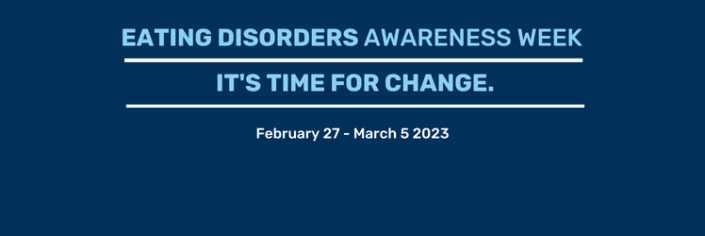One of the most common questions I’ve received as both a clinician and an eating disorder survivor is how to know whether someone truly has an eating disorder. In this day and age, when food fads and diets come and go quickly and people so regularly, casually discuss the manner in which they “eat their feelings” as a means of coping, it can be hard to discern when one’s eating practices morph from disordered eating into an eating disorder.
Normalized, non-disordered eating is when one mindfully consumes food when hungry and is able to stop when full. Additionally, they incorporate variety into their diet. Now, according to this definition, many people I know, who consider themselves to have a terrific relationship with food, may be classified as “disordered eaters”: they eat when they’re bored, have the same thing for lunch each day, cut out a main food group, etc. Societal standards and pressures, as well as preoccupations with weight loss and exercise, may lead individuals to alter/manipulate their food intake. For many people, this “works.” It does not interfere with their lives; they are able to find food they’re comfortable with at any restaurant, and there is no desire to change.
For others, this way of eating can be a precursor to a full-fledged eating disorder, and in many cases, it is hard to distinguish when an individual is struggling with disordered eating versus when an eating disorder is at play. From a clinical perspective, all who have a non-normalized relationship with food have an opportunity for introspection and reflection around their patterns and behaviors in relation to food and exercise. This being said, the essence of this piece will focus primarily on the distinction between this type of disordered eating and an eating disorder.
“How do I know if I should be worried? What if this gets worse?” These are the thoughts and questions, not only for those concerned for their loved ones, but also for individuals who are unsure about what type of help they might need. There are three key factors: behaviors, obsession, and functionality.
When an individual is struggling with an eating disorder, they generally engage in multiple behaviors. These behaviors can involve food or may relate to body image or mood. Judging by these behaviors alone would be insufficient: many people eat health foods or consume large quantities of food and do not have eating disorders. The quantity of behaviors may be an indication; for instance, this person engages in behaviors multiple times per week or even per day. This being said, many people keep their behaviors a secret and it is therefore difficult to gauge based on behaviors alone.
The level of obsession around eating disorder thoughts and behaviors can distinguish disordered eating from an eating disorder. It can be normal to think about food when hungry or what one might have for the next meal. For those struggling with an eating disorder, however, the thoughts are generally all-consuming; the individual thinks about calories, taste, food avoidance, or where to buy food, etc. This level of obsession can impair focus, the ability to stay present, and sleep, among other things. While it’s difficult to judge how much time and energy another person is spending thinking about food or using behaviors, the individual may offer this information or it may be evident that they spend more time in the grocery store, or perhaps isolate more frequently, and their general behaviors and patterns have changed.
Finally, the level of functionality is a distinguishing factor. When someone’s eating patterns take them away from normal functioning, this can be a strong indication of an eating disorder. This can include a woman who will not go out with friends because of the fears around their judgment while she eats. Or perhaps an individual does not attend work or school on more than one occasion due to behavior use like a compulsion to exercise. While these examples may sound extreme, those struggling often cite impairments of their social functioning as well as other obligations, due to their eating disorders.
The distinction between an eating disorder and disordered eating is one that takes practice in order to achieve understanding. Oftentimes, those struggling report that their eating disorder began as disordered eating. This by no means indicates that all who engage in disordered eating will have an eating disorder. Rather, it is a reminder to practice reflection and support for those around us about whom we have any type of concern.
I do not encourage diagnosis of others without involving a professional and yet, perhaps this piece sheds light on the type of warning signs that may present themselves and will plant the seed not only for further discussion around this important distinction, but also call to mind the need for methods of prevention and help not only for eating disorders in general, but for disordered eating. With further understanding and curiosity, we can rise up and provide support to all those struggling.
Temimah Zucker, LMSW is a primary therapist at a treatment center and also sees clients in private practice. After recovering from her own struggle with an eating disorder she immersed herself in the field as a writer, meal mentor, speaker, therapist, and activist. Temimah is also in the process of creating TVC, a non-profit geared toward helping those struggling within the Jewish community.






